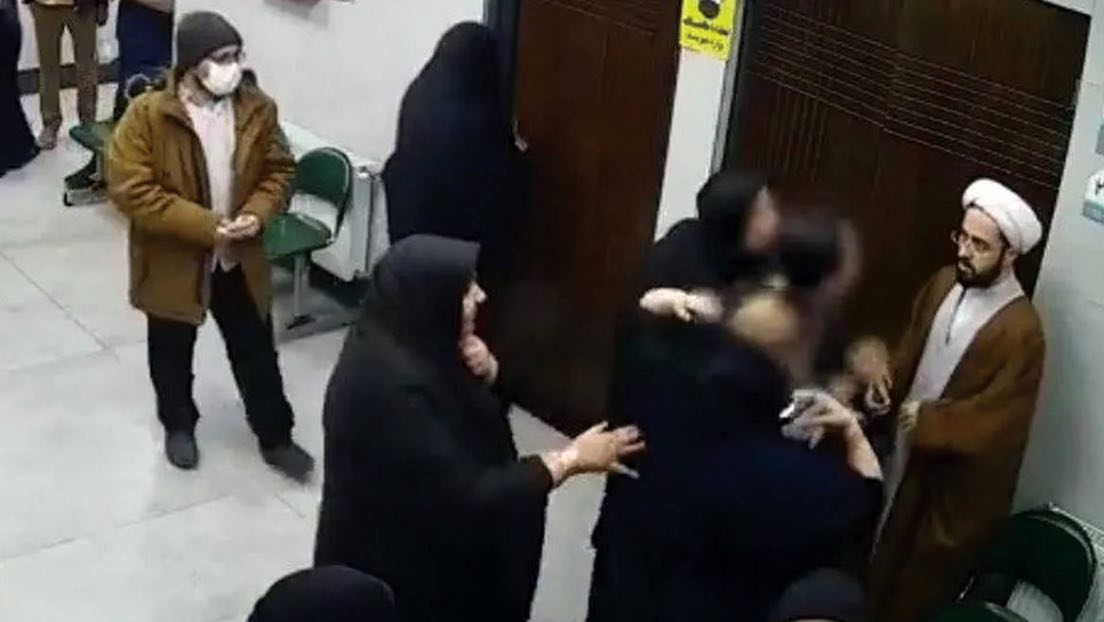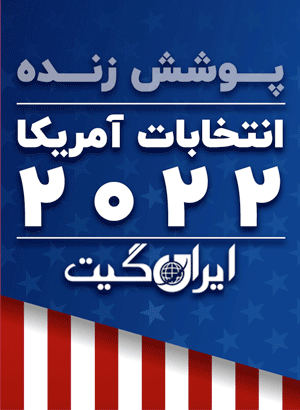Exhibition of hardline religious power in Qom
What a seminary student boasts about behind the story of photographing a young mother in Qom
A seminary student in Qom secretly takes photos and videos of a woman sitting on the ground in a corner of a clinic in Qom, holding her baby in her arms and her scarf fallen on her shoulders. The young woman becomes upset, protests to the cleric, and demands him to delete the photos. The cleric refuses, and the woman repeats her demands loudly. The filming of this confrontation and the distress of the young mother upsets and angers the public.
The anger and concern of the young mother escalate, and a group of women rush to help her. They surround the cleric and demand vehemently that he give them his mobile phone to delete the photos and videos. The cleric resists, and the women insist on their request. The young mother suffers a seizure.
The movie depicts important and thought-provoking aspects of the Iranian society, points that we are all aware of, whether it’s the people who criticize such behaviors or those who know that taking photos and videos can worry and anger parts of society, leading to the accumulation of tension, animosity, and hatred. Consider this movie as a random survey, where everything suddenly happens, but the attendees at the clinic gave the right to the young woman and the middle-aged protester became silent. It’s as if it’s a random survey with the question of whether you approve of the actions of the middle-aged protester or not. The answer is not definitive but based on people’s behavior.
However, when we know that such behaviors lead to anger, distrust, and people’s concerns, and their consequences are completely clear, why do we still repeat them? Behind this incident lies a hidden big reason, a distressing reason, and ultimately why such aggressive and result-oriented behaviors are sometimes observed in a corner of the city or country, making people anxious and angry.
This film simultaneously depicts the current position of clergy in Iranian society. The clergy is a very old and rooted institution that in the not-so-distant past was considered reputable and respected by various groups in Iranian society. In the past, just the presence of a clergy member would lead women to observe their hijab without needing any reminders. However, today not only does this presence not have the same impact, but even their words do not carry as much influence as before. This event serves as an example of the state of the religious institution and its authorities in society. If anyone has doubts about this, they can refer to the results of recent surveys. These survey results indicate that fundamental beliefs have also declined. What is the reason that the situation has reached this point?
In the field of sociology of religion in literature, there are various classifications related to religiosity. One of them is official religiosity, which in Iran is usually represented by the clergy after the revolution. When a cleric appears in public in their distinctive attire, they no longer need to say they are a religious person; their clothing has become a symbol of their religiosity. Therefore, if society rejects the behavior of a cleric who adheres to general and ritual religiosity, it can influence people’s judgment of official religiosity.
Many researchers, sociologists, and experts in religious and political affairs have warned in recent years that religious tendencies in Iranian society have declined. They believe that all major indicators of religious commitment or religiosity among the people have declined over the past few decades. This behavior and social situation indicate that the clergy see themselves in societies where religious behaviors and tendencies are declining. Now the question is whether such behaviors reduce distances.
The logic and purpose of such behavior, as evident from the statements of defenders, is to strengthen the religious and spiritual values of society. It is clear that such behaviors do not lead to enhancing the credibility of religious values; on the contrary, they diminish these values, resulting in a decrease in credibility and status of the clergy. At the same time, such behavior alienates a large portion of the population from the government, religious values, and more broadly, from the clergy.
So, what is the insistence for? There can be multiple answers to this question. One of these answers is the need to demonstrate power, especially when its components are declining. Individuals and groups who have lost their social base no longer have the influence they once had; their media monopoly is gone, and they lack the power to rebuild institutions in Iranian society because all their thoughts and efforts are focused on holding onto power.
When there seems to be no way out, it is natural for individuals to resort to power and force, knowing that their behavior is consequential and can even have a reverse effect. They then turn to the powerful factor and force and try to achieve what they want through this means. Therefore, the more problems increase and their impact decreases, the more they will resort to aggressive methods and the use of force and politics.
Unfortunately, even the official custodians of religion show less interest in seeing the realities of society in such circumstances, and by their silence, they approve of this process. Just look at the news on Fridays, some officials, including many Friday prayer leaders and some of the new members of parliament, only a few days after the elections, emphasized confrontational approaches in the issue of hijab in their speeches. Some even encouraged people to be present in the public square and confront unveiled women. The nature of all these speeches and policies was similar – the issue of using politics and power in societal matters has existed for years and will continue to do so.
If in the past, the issue of video and satellite emerged and evolved over the years, in the future, even if the hijab issue is resolved, new topics will continue to arise. In fact, individuals’ presence in these confrontations and marginalizations is fixed. Even at the cost of diverting the country’s path of progress to the realm of emotions, confrontation, and destruction, the result of these behaviors and power struggles will ultimately harm the cultural and religious fabric of society.
Another point is that people do not differentiate between clerics regarding these behaviors. Although some clerics and believers express concerns about such confrontations, when those who criticize such behaviors do not openly voice their opposition or show any action, it is natural that people do not differentiate between them.
If religious authorities and clerics who do not approve of such behaviors do not explicitly criticize and condemn these actions and remain silent, how will people understand their views on these confrontations? As a result, people will not differentiate between clerics and religious authorities on issues that society disapproves of, and the institution of clergy will lose more of its social foundation than ever before.
Persian
مشاهده این مقاله به زبان فارسی


